Literary Centenaries: Classic Fiction by Women Writers from 1925
By Nava Atlas | On April 29, 2025 | Comments (0)

There’s a lot of hoopla around 2025 being the centenary of The Great Gatsby by F. Scott Fitzgerald, published in 1925. It’s the quintessential novel of what’s come to be known as the Jazz Age.
But it’s not the only centenary worth celebrating in 2025. There was some great 1925 fiction that came from the pens (and typewriters of women writers, including Virginia Woolf, Zora Neale Hurston, Willa Cather, Anita Loos, Anzia Yezierska, and more.
Poor Scott Fitzgerald didn’t live long enough to see the lasting legacy of his work (he was gone by 1940, at the age of 44). There’s a LOT (this is the listing on Google News alone) of news and editorializing about Gatsby. It’s kind of cool that a book is getting so much attention in the midst of all the horrors we’re living through — kind of a testament to the power of literature.
So this got me to wondering … what were the literary ladies up to in 1925? What centenaries are being swept aside or not discussed enough? Let’s give them some centenary love as well. Here are just a few …
. . . . . . . . . .
Mrs. Dalloway by Virginia Woolf
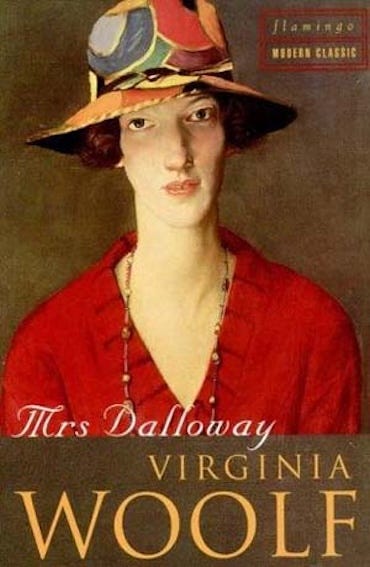
Mrs. Dalloway, arguably one of Virginia Woolf‘s most accessible novels, describes a day in the life of Clarissa Dalloway, an upper-class woman preparing to host a party that evening. The unique aspect of the novel is that it focuses on her inner world, and that of the peripheral characters, taking the reader as she travels back in time.
Unusual for its time in using stream of consciousness as literary structure, the novel was met with positive response, and often appears on lists of best novels of the twentieth century.
As Clarissa goes around London, buying flowers and doing other preparations for the evening, she reflects on her youth and her choice of husband. She ruminates on a former suitor, the enigmatic Peter Walsh, and her youthful flirtation with Sally Seton. The novel covers many themes including time, mental and physical illness, the role of women in society, regret, sexuality, and more.
“He thought her beautiful, believed her impeccably wise; dreamed of her, wrote poems to her, which, ignoring the subject, she corrected in red ink.”
Read more lovely quotes from Mrs. Dalloway here.
Mrs. Dalloway’s centenary is coming right up on May 14. but Google News UK doesn’t list a fraction of the kind of press being bestowed upon Gatsby on this side of the Atlantic, but hopefully it will get its due on its actual birthdate.
. . . . . . . . . .
“Spunk” — the short story that
helped launch Zora Neale Hurston’s career
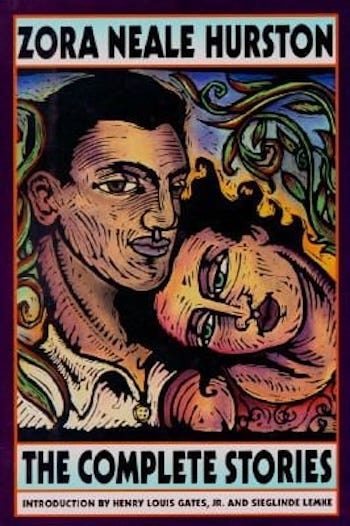
Zora Neale Hurston’s short story, “Spunk” (1925), helped launch her career as a fiction writer. She had already established herself as an ethnographer and folklorist, having been the first Black student to study anthropology at Columbia University in New York City.
“Spunk” was originally published in the prestigious Opportunity, A Journal of Negro Life, and got Zora’s literary career off to a running start. The story won second place in the journal’s fiction writing contest. At the awards dinner on May 1, 1925, Zora also won second place in the drama category for her play, Color Struck, plus two honorable mentions. These early successes helped assure Zora’s place as a writer in the creative world of the Harlem Renaissance of the 1920s.
Here, you can read the full text of “Spunk,” which in recent times has been adapted for the stage.
. . . . . . . . . .
The Professor’s House by Willa Cather
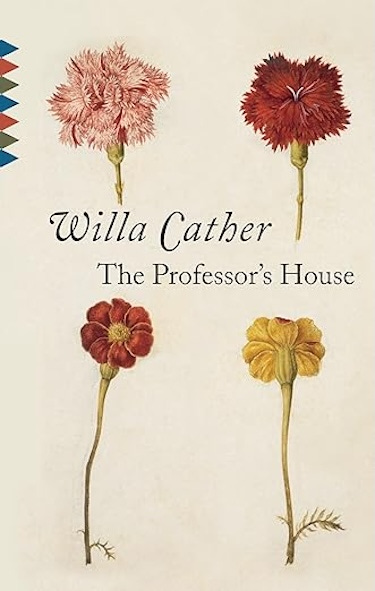
The Professor’s House by Willa Cather, published in 1925, is one of this American master’s mid-career novels. The story of Professor Godfrey St. Peter tells of a midlife crisis — before the term was coined.
When the professor and his wife move into a new house, he begins questioning the path that his life has taken. His daughters have grown up, and he loses much of his will to live, not finding anything to look forward to. Though it hasn’t achieved the enduring stature of some of Cather’s better-known works, in her skilled hands, The Professor’s House becomes a touching story of personal and spiritual self-reflection.
“The man he was now, the personality his friends knew, had begun to grow strong during adolescence, during the years when he was always consciously or unconsciously conjugating the verb ‘to love’ — in society and solitude, with people, with books, with the sky and open country, in the lonesomeness of crowded city streets.”
IMHO, Willa Cather is truly one of the Great American Novelists; do you think she gets her due?
. . . . . . . . . .
Gentleman Prefer Blondes by Anita Loos
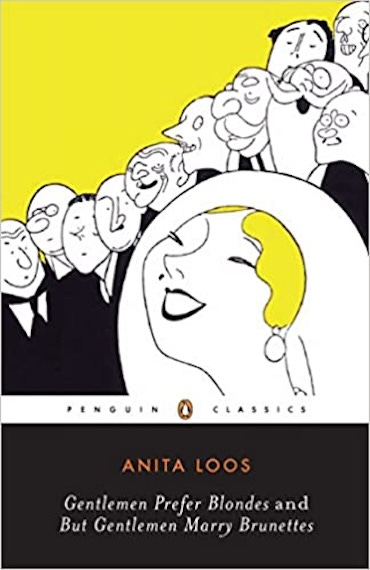
Gentlemen Prefer Blondes by Anita Loos (subtitled The Intimate Diary of a Professional Lady) popularized the trope of ruthless golddigger in the character of Lorelei Lee. We accompany the unflappable flapper around New York and Europe, where she dallies with the affections of hapless men.
By the time of the book’s publication, Loos (1889 – 1991 was a successful screenwriter, and claimed that the book’s inspiration came from a real-life incident. On a train, her effort to haul around large luggage was ignored by male passengers (Loos was a tiny brunette). Yet when a blonde dropped a book, the men around her fell all over themselves in a competition to retrieve it for her.
She used the incident as the jumping-off point for a series of sketches about a blonde flapper from Little Rock. They were published in Harper’s Bazaar as “The Lorelei stories.” The satiric stories that skewered sex tropes were such a hit that the magazine’s circulation quadrupled within a short time. The stories were soon shaped into the novel Gentleman Prefer Blondes, published in 1925, and which became the second bestselling novel of 1926. Despite the light tone of the book, it was well-received by critics and devoured by the public.
Edith Wharton deemed it “The Great American Novel,” though that distinction hasn’t held up. The best-known adaptation of Gentlemen Prefer Blondes is the 1953 film starring Jane Russell and Marilyn Monroe — quite altered from the book — as two best friends who work as showgirls.
. . . . . . . . . .
Bread Givers by Anzia Yezierska
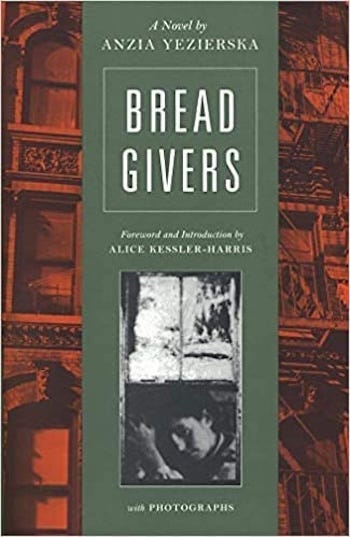
Bread Givers by Anzia Yezierska (1880 – 1970) is the best-known novel by a writer whose work reflected the Jewish immigrant experience in America of the early 1900s. To set this kind of story down with a female perspective was a rarity in her time, reflecting the author’s chutzpah and determination; yet she was forthright about her struggle to write it.
At the age of ten, in 1890, Yezierska arrived with her family to New York City’s Lower East Side. A product of the immigration wave of the late 1800s, she never quite shed the feeling of being an outsider. Longing to rise above her circumstances, she was hampered by her brittle personality and a measure of self-loathing.
Bread Givers (1925) an autobiographical novel, delves into the well-trodden theme of an immigrant family whose children strain against Old World parents.
The three daughters chafe under their father’s domination. The youngest and feistiest is Sara, oddly nicknamed Blut und Eisen (“Blood and Iron”) from the time she is tiny. She’s a born rebel, fighting for autonomy and seeking self-determination. We can assume that she’s Anzia, through and through. The process of breaking away from her father’s domination is painful. Some of her strivings are awkward and uncomfortable, but she emerges as a person (mostly) in command of her world.
. . . . . . . . . .
More literary happenings of 1925
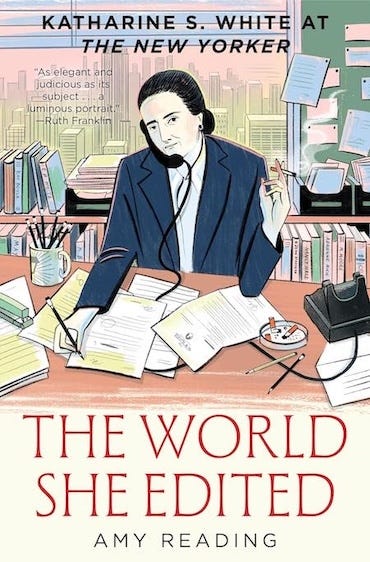
- In the summer of 1925, Katharine Sergeant Angell walked into the offices of The New Yorker, then a fledgling magazine, and was hired. Over the next thirty-six years, she would become a powerhouse editor who transformed the publication and made many literary stars. She married another New Yorker star, E.B. White, after which she went by the name of Katharine White.
Her greatest contribution was to publish women writers, establishing and nurturing their reputations. They included Janet Flanner, Mary McCarthy, Elizabeth Bishop, Jean Stafford, Nadine Gordimer, Elizabeth Taylor (the English writer, not the actress of the same name), Kay Boyle, and others. The first full biography of Katharine White, The World She Edited, was published last year. Read more about it here. - So Big, Edna Ferber’s 1924 bestseller, won the Pulitzer Prize for the Novel in 1925. No one was more surprised than she was.
- Gertrude Stein’s The Making of Americans: Being a History of a Family’s Progress was published, though the author had finished it many years earlier. It was quite a task to find a publisher for it, as it was densely written with the kind of inscrutable language she became known for.
- March 25, 1925: Flannery O’Connor, known for stories and novels in the Southern Gothic genre, was born in Savannah, Georgia.
- May 12, 1925: Imagist poet Amy Lowell died of a cerebral hemorrhage; soon after, she was
posthumously awarded the Pulitzer Prize for Poetry, for the collection What’s O’Clock, published the previous year. - September 10, 1925: Beloved contemporary poet Mary Oliver was born in Maple Heights, Ohio
Leave a Reply